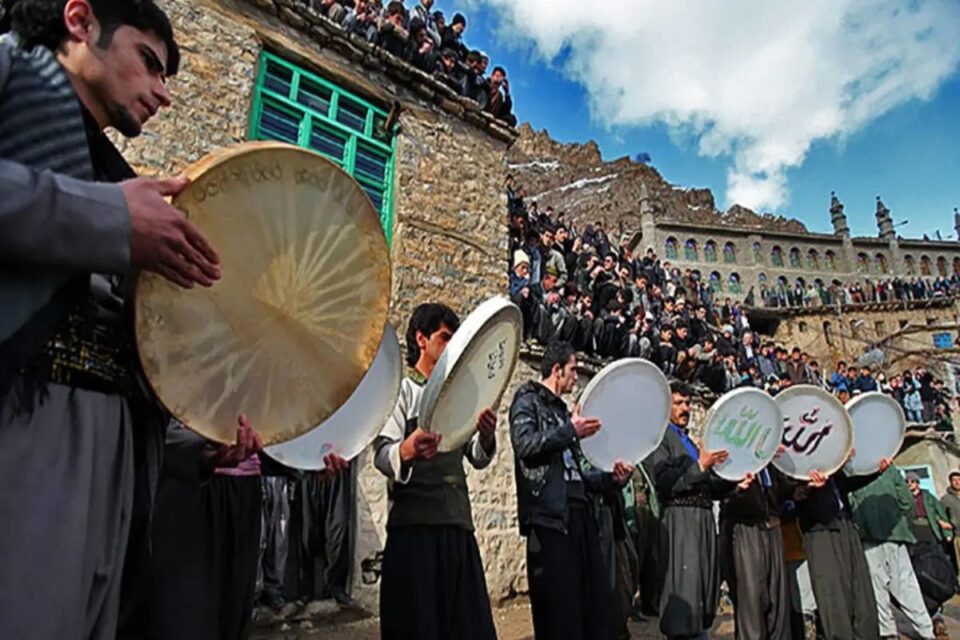The Komsay Festival, one of the most important and longstanding Kurdish national religious ceremonies, continues to captivate both locals and international visitors. Celebrated for thousands of years, this festival symbolizes the enduring presence of Kurdish culture and traditions. Its growing popularity worldwide has garnered attention from numerous international journalists and media outlets. However, Kurdish researchers and historians have raised concerns over attempts to distort the origins and significance of the festival, warning against mixing it with other religious rituals.
The festival takes place in Hawraman, a mountainous region in the Zagros Mountains that extends into the Shaho Mountain Range. This area is not only breathtaking in its natural beauty but also rich in historical significance, having preserved ancient architectural structures, lifestyle practices, and handicrafts untouched by modernity.
Held annually on the last Friday before May, the Komsay Festival occurs 45 days after the start of spring. The word “komsa” is derived from two Kurdish terms: “kom,” meaning group, and “sai,” meaning learning. The celebration centers around a gathering near a white stone, located near the grave of Pirshalyar and his old worship house. During the ceremony, participants break and burn part of the stone, believing that the stone will only break on this special day. The act of breaking the stone is considered a symbol of hopes and wishes for the coming year. Locals carry a piece of the stone as a token of their desires, believing it will remain the same until the following year.
The Komsay Festival holds deep spiritual meaning for the people of Hawraman, with many attributing ancient beliefs about life after death and nature to this unique practice. Pirshalyar, one of the region’s most revered religious figures, is said to have played a key role in shaping the festival. A member of the 99 famous religious figures of Hawraman from the Zoroastrian period, Pirshalyar is celebrated for curing the princess of Bukhara, Bahara, from a fatal illness, leading to their marriage. This event is commemorated annually as part of the festival.
In addition to its religious significance, the Komsay Festival is also a celebration of the region’s folk medicine traditions. Many Hawrami people continue to practice ancient healing methods, relying on the unique plants and flowers of the region to treat rare ailments.
Writer Jalil Abbasi provides insight into the significance of the stone-breaking ritual, describing it as a miracle. He clarifies, however, that this “miracle” is not a metaphysical event, but rather the growth of a rare plant that regrows annually, reinforcing the connection between nature and belief.
Over time, the traditions surrounding Pirshalyar have been distorted, with some mistakenly associating his origins with Islam. However, the festival and the religious beliefs surrounding Pirshalyar are rooted in pre-Islamic Kurdish traditions, reflecting the social and philosophical values of the Kurdish people.
The Komsa ceremony is recognized as an important cultural event, listed as number 63 on the Iranian National Monuments List. Furthermore, UNESCO has included Hawraman in its World Heritage List, ensuring the preservation of this rich cultural tradition for future generations.

